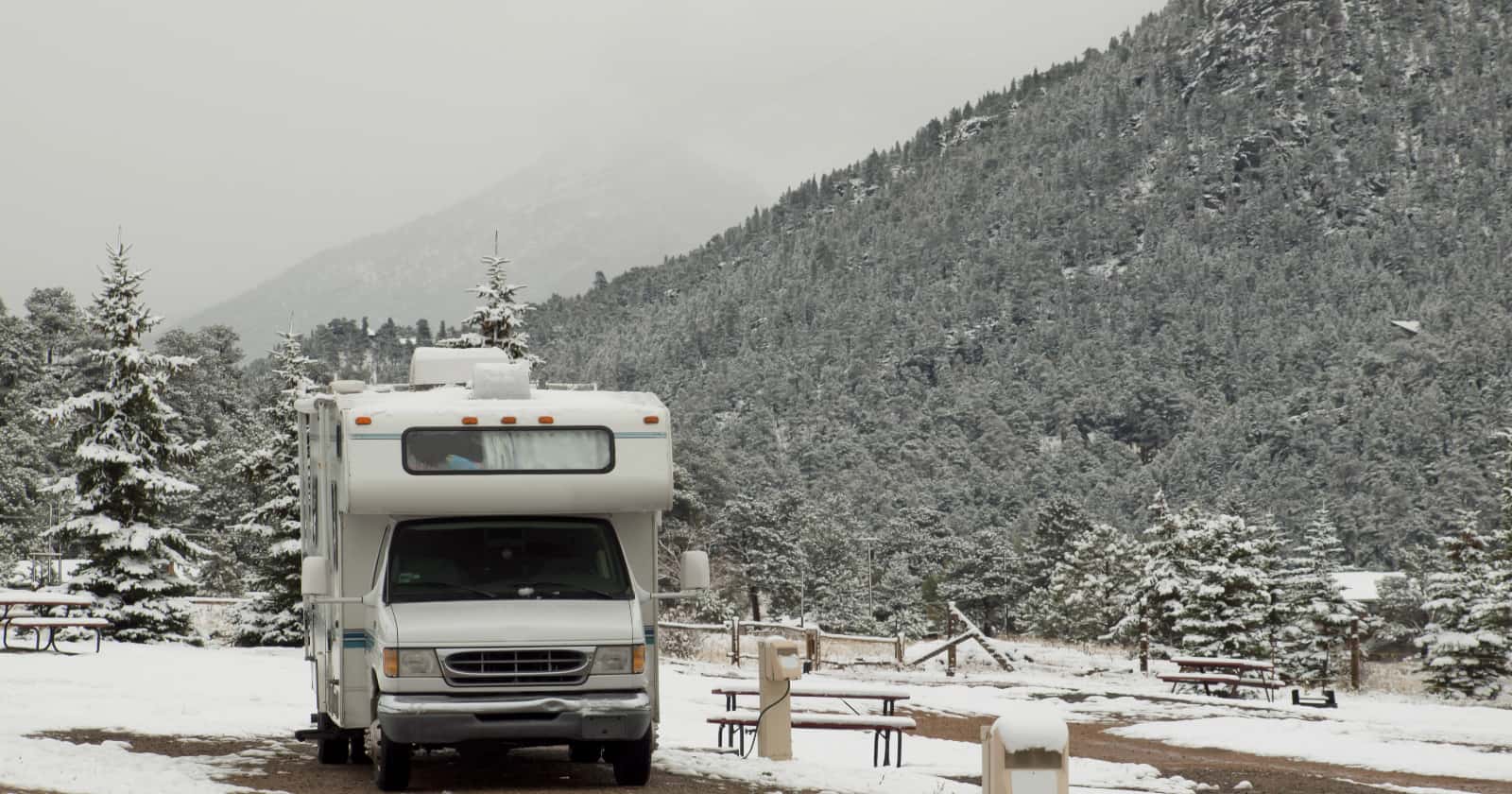Planning on driving an RV in the snow? Navigating your recreational vehicle through snow can be daunting, and preparation is key. Our guide offers 10 crucial tips to ensure your cold-weather RV adventure is both safe and enjoyable. From tire maintenance and route planning to braking techniques, these essential tips will help you tackle snowy roads with confidence.
1. Consider Waiting if You’re Able to
The Ideal Strategy: The simplest solution is often the most effective: Avoid RVing in the snow if you can.
Risks: Despite taking precautions, driving an RV in snowy conditions remains riskier than in clear weather. The U.S. Department of Transportation notes that nearly 40% of weather-related vehicle crashes happen in snowy or icy conditions.
Alternative Plans: If snow is forecasted or already present, reconsider your itinerary. Extra costs for staying another night at an RV park are trivial compared to the risks of driving in bad weather.
2. Plan Ahead Before Driving an RV in the Snow
You should always know your route – this is super easy if you’re using the RV LIFE Trip Wizard, but this is extra true if you’ll be driving your RV in the winter. Be sure you have your trip completely mapped out and avoid being surprised.
If you can, you should also check for things like inclines and bridges along your route. These will present their own challenges in freezing weather, and you’ll want to be prepared for them.
3. Check Your Tires — And Consider Tire Chains
Importance of Traction: Driving in the snow severely affects your traction. If your tires are not fit for the job, you’re asking for trouble.
Old vs. New Tires: Older tires lose grip, and bald tires are a recipe for disaster in snow. Specialized winter tires can give you the edge you need.
Manufacturer Guidelines: Companies like Goodyear and Michelin recommend replacing RV tires when the tread is down to less than 2/32-inch.
Federal Regulations: For rigs over 10,000 pounds, the front tires must be replaced when the tread hits 4/32-inch, as per federal guidelines.
Alternative Solutions: Snow chains or snow socks can be lifesavers. They dig into the snow to boost traction. Just remember to remove them when the snow’s gone.
4. Take It Slow
You should go much slower than you normally would when you drive your RV in the snow. This ties into the lack of traction in snowy conditions: the faster you’re going, the harder it will be for your wheels to stick to the road.
That means a way higher chance of losing control of your RV, especially when braking or turning. Plus, the faster you’re going, the less time you’ll have to react if you find yourself facing an unexpected hazard.
5. Keep It Smooth
When you accelerate in the snow, you should do so smoothly, consistently, and slowly. Think back to driver’s ed and imagine there’s a boiled egg under your gas pedal – you don’t want to squish it!
Suddenly and quickly accelerating can cause your tires to spin out. Maintain steady control and take your time as you speed up to maintain control.
6. Brake Gently
Just as you need to accelerate slower in the snow, you also have to decelerate slower. Be careful with your brakes in the snow.
There are few things more dangerous when driving in the snow than braking suddenly. If you do, instead of slowing or stopping, you’re liable to lose control and possibly even cause an accident.
7. Leave Extra Space
Even if you drive as carefully as can be, sometimes, things can go wrong. Maybe it’s you, maybe it’s another driver. But either way, you want to have plenty of time to react if things do go wrong.
To make sure you have that reaction time, leave plenty of space between you and other vehicles. With an extra buffer zone, you’ll have plenty of time to maneuver or come to a stop instead of slamming the brakes.
Initial Challenge: Navigating hills in an RV during snowy weather can be a high-stakes endeavor.
Approaching Uphill:
- Aim to reach an optimal speed as you approach the hill.
- Use gentle acceleration to achieve this speed.
Ascending the Hill:
- Focus on maintaining your speed throughout the ascent.
- Apply gentle acceleration if needed, but steer clear of rapid acceleration.
Descending the Hill:
- Remove your foot from the accelerator.
- Use your brakes minimally to maintain a controlled speed.
9. Stick to Low Beams in Snow
Using high beams in snow backfires; the light reflects off the snow and actually makes it harder to see. Always opt for low beams in snowy conditions.
10. Watch for Hazards: They’re Harder to Spot in Snow
Driving in snow requires extra attention due to reduced visibility and increased accident risk.
- Be Cautious When Reacting: If you encounter a hazard, avoid abrupt changes in speed or direction. This can lead to a loss of control.
- Heightened Alertness: Poor visibility makes spotting hazards more difficult. Stay extra alert throughout your journey.
Conclusion: 10 Essential Tips for Snowy RV Drives
Navigating an RV in winter isn’t for the faint of heart. Between icy roads and low visibility, you’ve got your work cut out for you. But don’t fret—if you find yourself in a winter wonderland, these 10 tips are your lifeline. Remember, safety first: take it slow, and you’ll arrive in one piece.
Found these tips useful? Share this article with your fellow RVers to keep the road safer for everyone this fall and winter. The more we know, the better we can brave the elements together.




